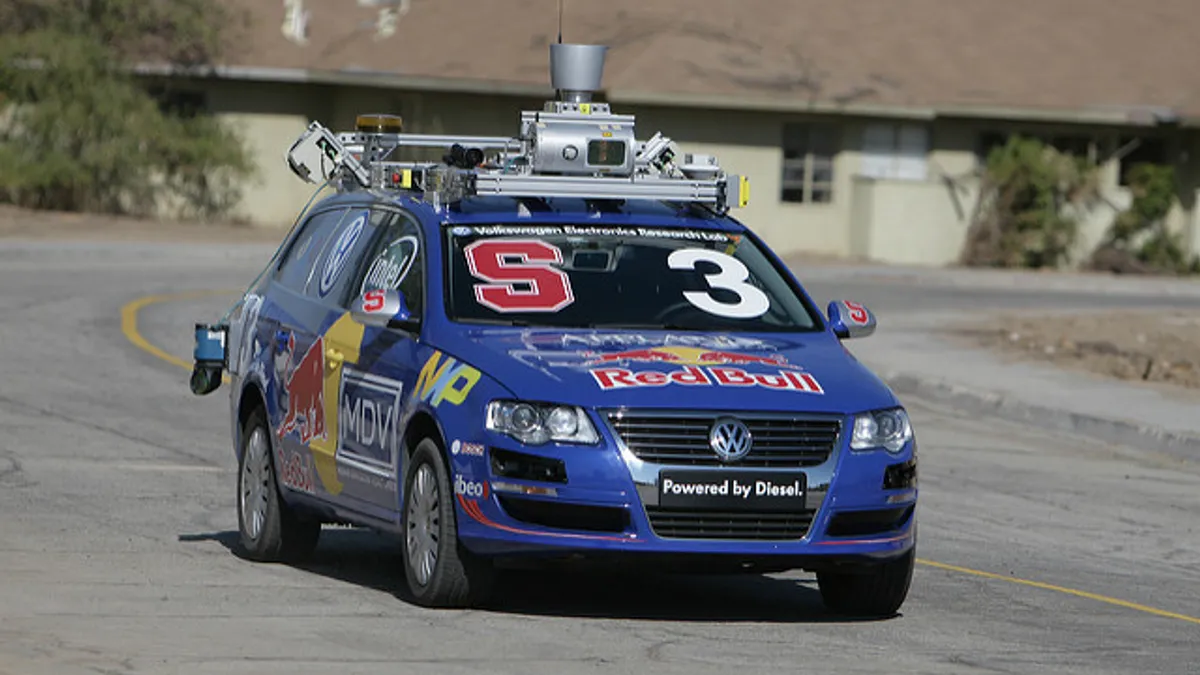Dive Brief:
- More than 9.5 million workers in 329 occupations could be affected by the rise of autonomous vehicle (AV) technology or other digitalization in transportation, according to a new study by the Brookings Institution. That’s more than 1 of every 20 workers across the country.
- The workers affected are in fields like driving, vehicle design, manufacturing, construction, shipping and surveyors. In every state, at least 5% of the workforce could be affected by digitalization in transportation.
- The changes will especially affect states with large transportation manufacturing roles in the Midwest and Southeast. Michigan and Ohio, the study says, each employ more than 700,000 workers in the manufacturing sector, meaning there could be significant disruption in those states.
Dive Insight:
The numbers from the Brookings study — authored by senior research associate Joseph Kane and Metropolitan Policy Program fellow Adie Tomer — is meant to break beyond what they call a "distorted picture" of the employment effects. Too many studies, they say, have only focused on drivers or have taken unrealistic looks at how employment will shift, and regional impacts have not been explored. Rather than looking solely at taxi or truck drivers, the Brookings study examines the entire supply chain of automobiles and driving to reach the 9.5 million estimate.
Other studies looking at drivers have predicted huge workforce impacts. A report commissioned by the American Center for Mobility in August found that cab drivers would see employment reductions, while truck drivers would be less affected. A June report from Securing America’s Future Energy found that AV deployment could contribute between 0.06 and 0.13 percentage points to the nation’s unemployment rate, although the economic impact would be offset by productivity gains.
The massive numbers, the authors write, are a reflection of just how disruptive AV technology will be and the need to look now at how the workforce will change in the near future. "We’ve got to get our workers ready for when the technological hype becomes daily reality," they write, "and that starts with defining the specific careers in this space, emphasizing the needed skills and training, and targeting workforce development efforts at a regional scale."
Already, public officials are looking at how to limit the negative employment impacts. Senators working on that chamber’s autonomous vehicle regulatory bill have looked at workforce impacts, and automakers and trade groups this summer formed the Partnership for Transportation Innovation and Opportunity to explore how to support workers while also accelerating the AV future.











